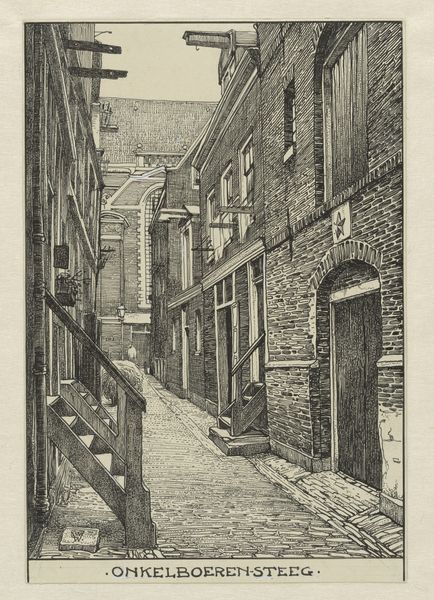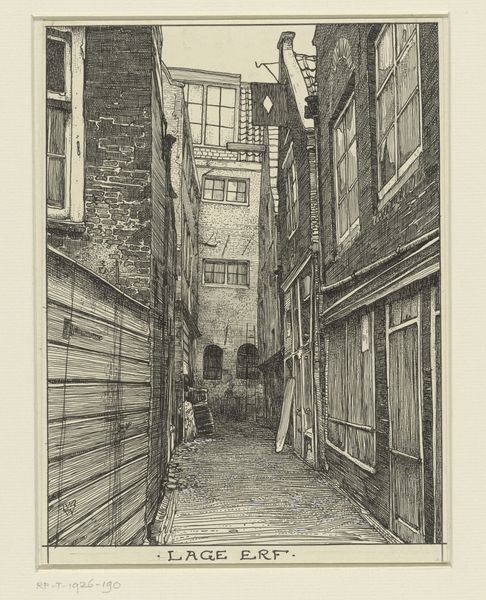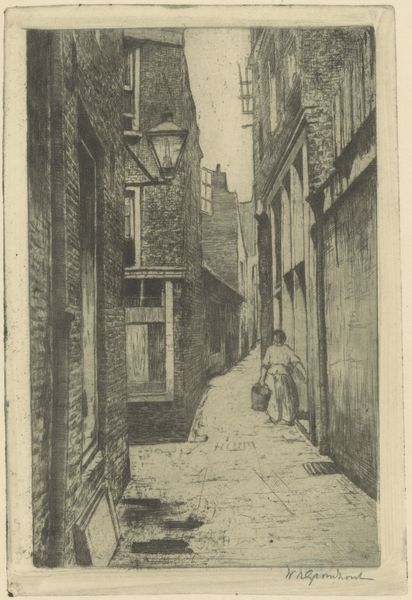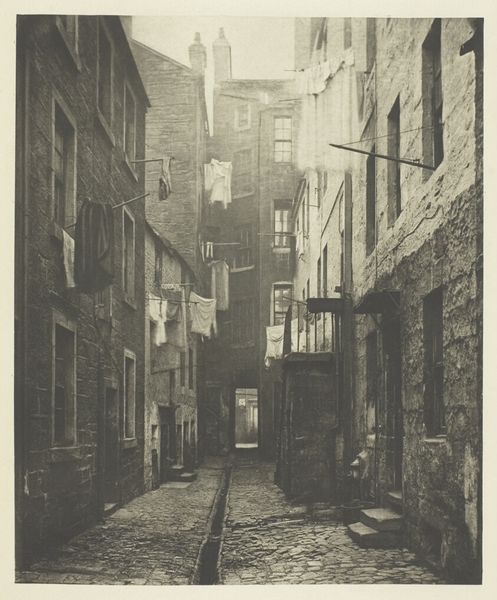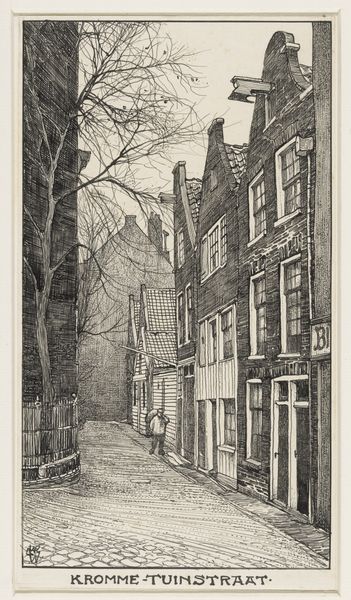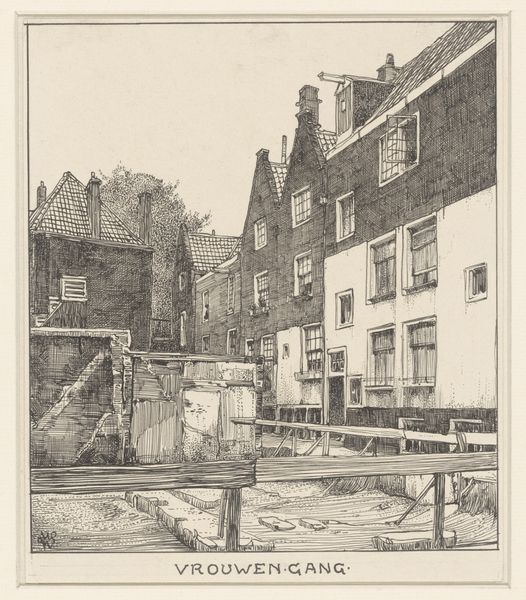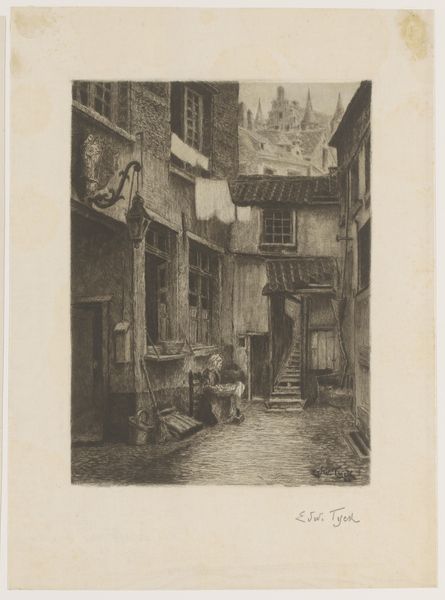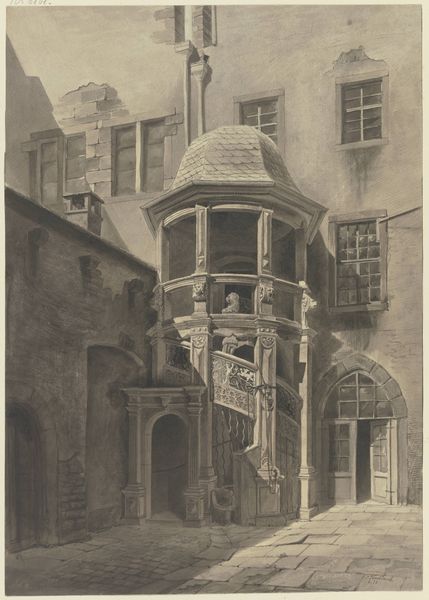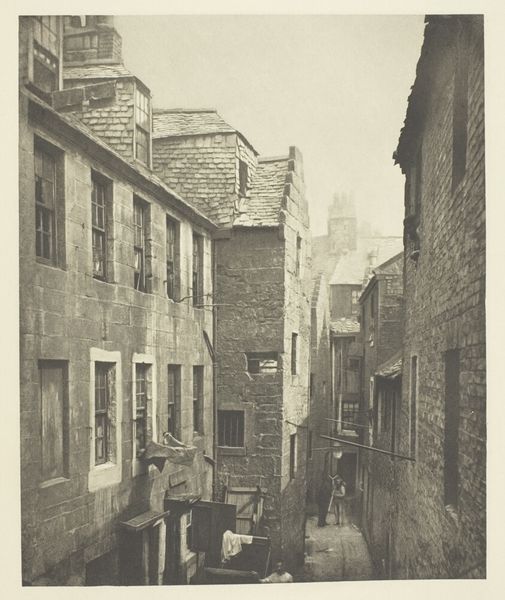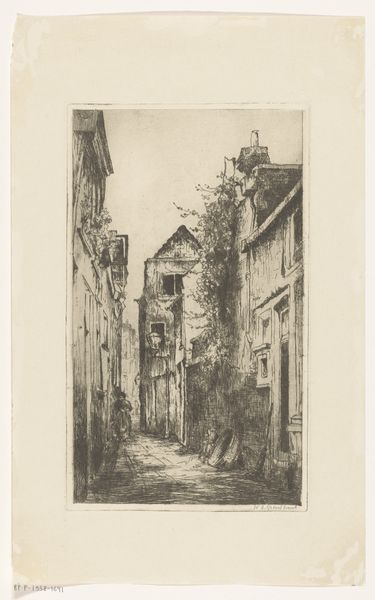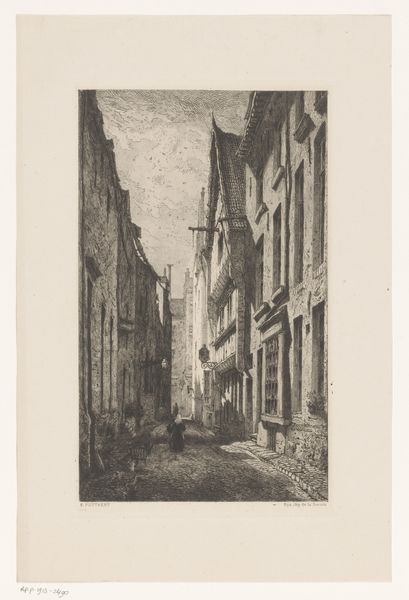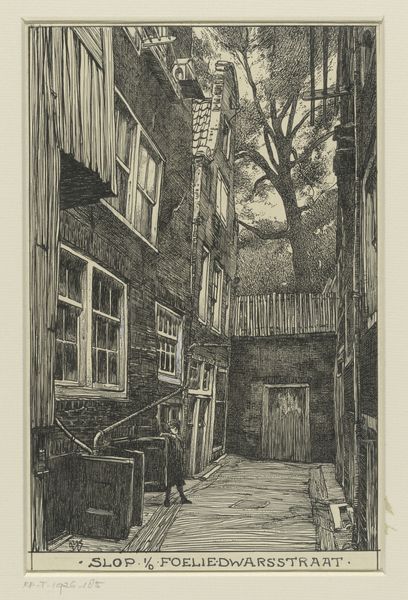
Zevenkattengang bij de Goudsbloemgracht (thans Willemstraat) te Amsterdam 1870 - 1926
0:00
0:00
drawing, paper, ink
#
drawing
#
dutch-golden-age
#
paper
#
ink
#
cityscape
#
realism
Dimensions: height 216 mm, width 150 mm
Copyright: Rijks Museum: Open Domain
Willem Wenckebach etched "Zevenkattengang near the Goudsbloemgracht in Amsterdam" using black ink to capture a humble, narrow alley. The name itself, "Seven Cats Alley," evokes a sense of mystery, suggesting a hidden world teeming with life unseen. The alley, a corridor of urban existence, is framed by the severe geometry of the buildings; the stark contrast of light and shadow emphasizes the mundane yet profound nature of the city's hidden corners. Narrow, crowded spaces have historically been associated with liminality, a place between worlds and a motif that reappears across centuries. Consider, for instance, the labyrinthine streets of ancient Pompeii or the bustling souks of Marrakech—each carries a weight of human experience, from the sacred to the profane. This narrow urban scene connects to our collective memory of the human condition and the subconscious processes of the mind, engaging us on a deep, emotional level. The symbol of the alley evolves through time, each iteration adding layers to its symbolic weight.
Comments
No comments
Be the first to comment and join the conversation on the ultimate creative platform.
